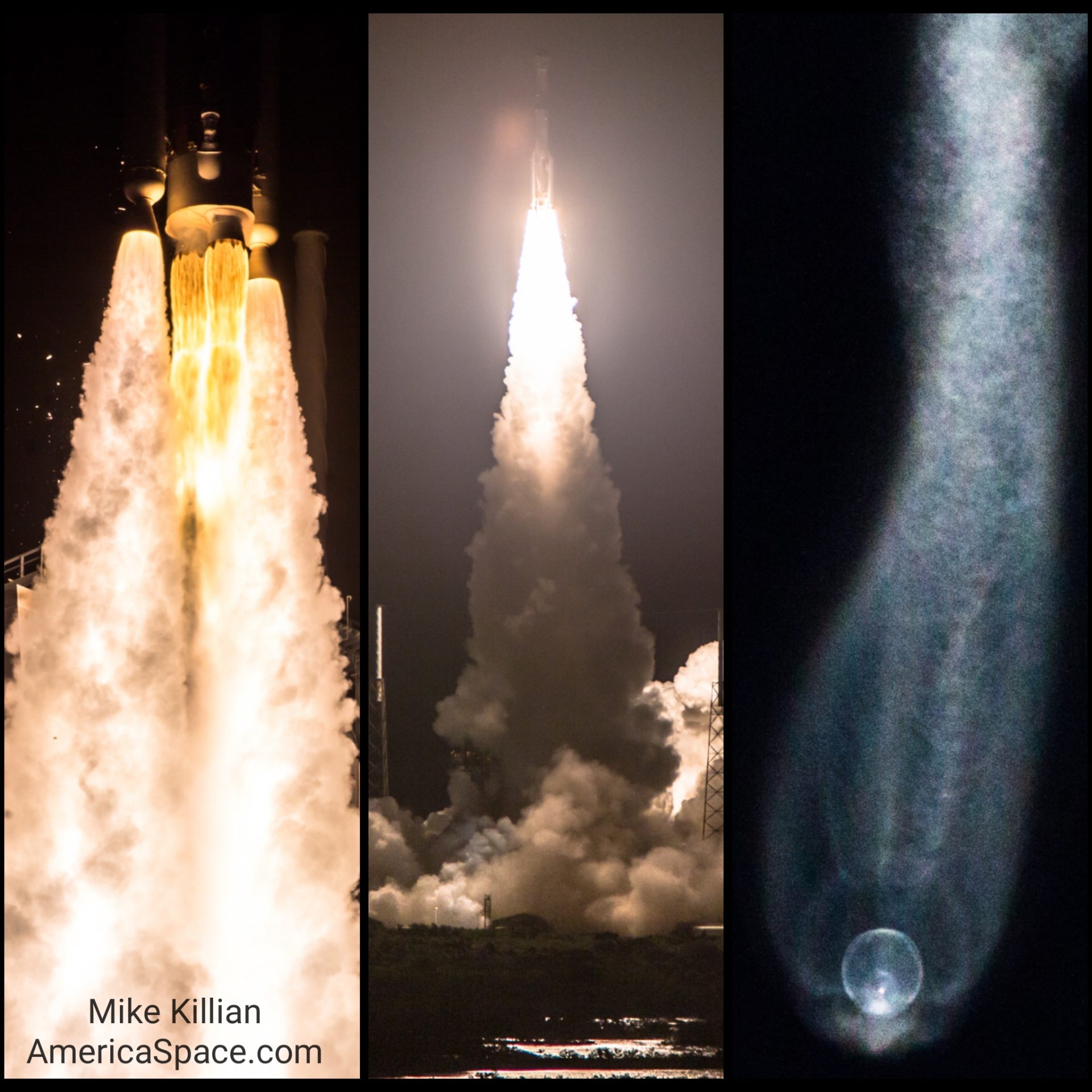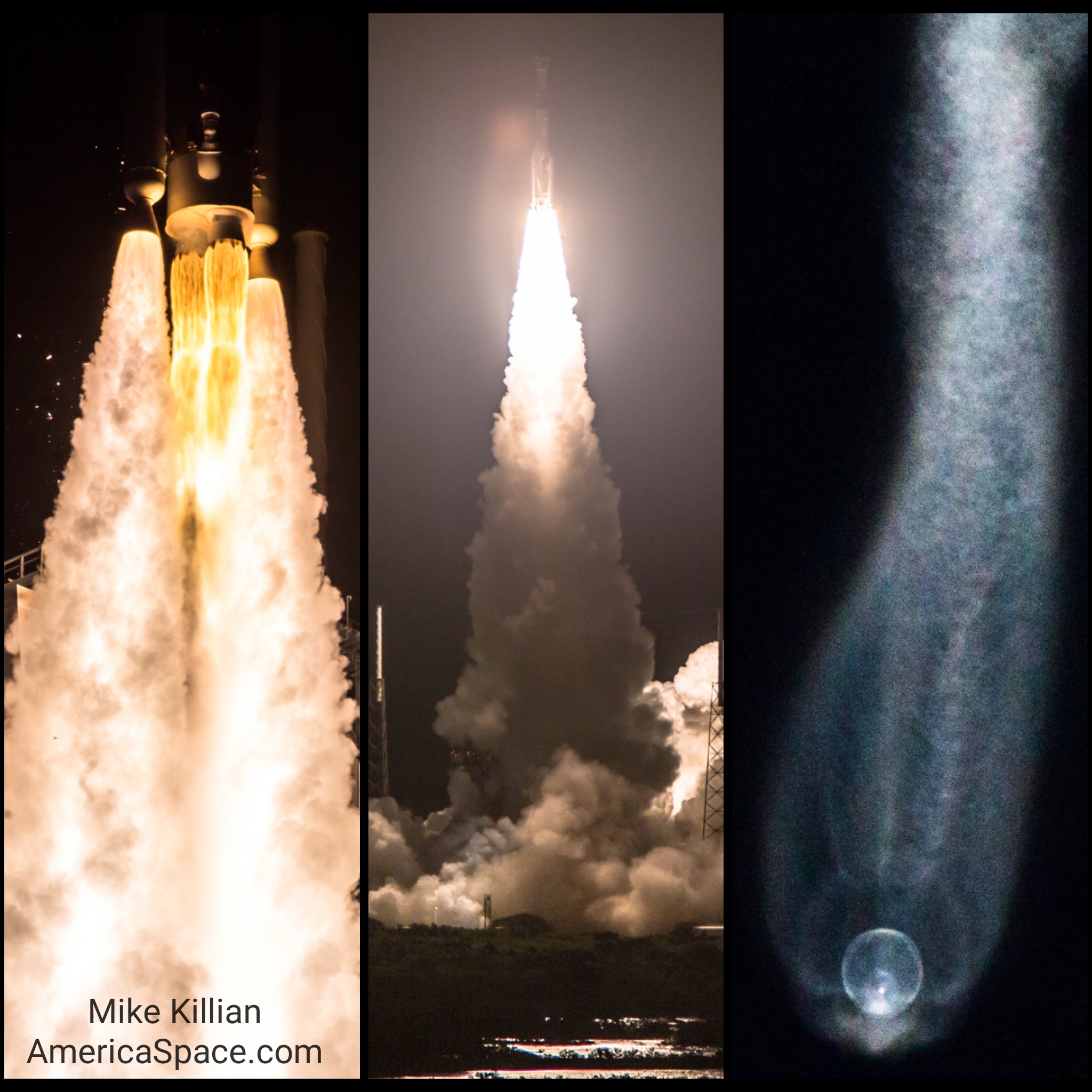
As United Launch Alliance (ULA) counts down to a revised No Earlier Than (NET) target of 4:43 p.m. EDT Tuesday, 21 May for the long-awaited Crew Flight Test (CFT) of Boeing’s CST-100 Starliner, NASA veterans Barry “Butch” Wilmore and Suni Williams are primed to become the first humans to launch atop a Mighty Atlas rocket since “Original Seven” Mercury astronaut Gordon Cooper flew his day-long Faith 7 mission in May 1963. Following launch from Cape Canaveral Space Force Station’s storied Space Launch Complex (SLC)-41, Wilmore and Williams will spend at least eight “docked” days aboard the International Space Station (ISS) conducting a range of flight test objectives before returning to a parachute-and-airbag-aided landing in the southwestern United States.
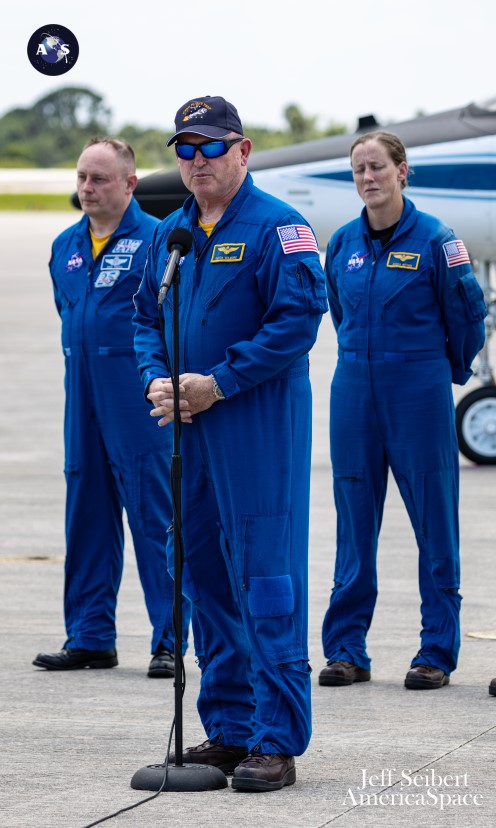

In becoming the first people to ride an Atlas rocket in more than six decades, Wilmore and Williams will add their names alongside Project Mercury luminaries John Glenn, Scott Carpenter, Wally Schirra and Gordon Cooper. And but for a slight twist of fate, two others—fellow “Original Seven” veterans Deke Slayton and Al Shepard—also came tantalizingly close to flying an Atlas themselves.
As might be expected, the Atlas-D of the Project Mercury era was a far cry from the mammoth Atlas V of today. Standing 94.3 feet (28.7 meters) tall, the rocket that lofted Glenn, Carpenter, Schirra and Cooper had a mass of 260,000 pounds (120,000 kilograms) and a liftoff thrust of slightly over 360,000 pounds (163,000 kilograms). Compare that to today’s Atlas V—with its Common Core Booster (CCB), Dual-Engine Centaur (DEC) upper stage and pair of Aerojet Rocketdyne-furnished AJ-60 strap-on solid-fueled boosters—and an entirely different beast emerges: a beast that stands 172 feet (52.4 meters) tall, weighs 1.3 million pounds (590,000 kilograms) and rises from Earth under a ground-shaking 1.5 million pounds (725,750 kilograms) of thrust.
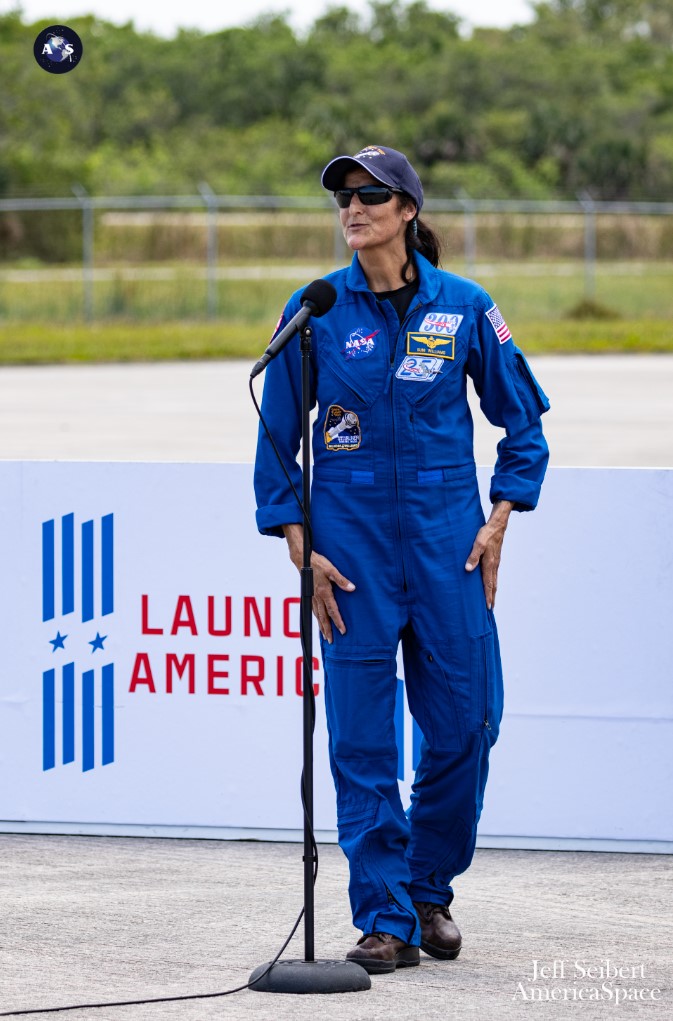

Atlas originated in 1946 as an Air Force-led concept for America’s first Intercontinental Ballistic Missile (ICBM) and initial studies were awarded to Convair Corp. of San Diego, Calif., which led to Project MX-774, described as “a sort of Americanized” version of Nazi Germany’s infamous V-2 missile. Its novel design would control the rocket by swiveling its engines, using hydraulic actuators that responded to commands issued by gyroscopes and an autopilot function.
Placed on a back burner for a few years by President Harry S. Truman, the ICBM effort earned the moniker “Atlas” in 1951 and by the middle of the decade Convair was deeply entrenched in the details of the new missile. Its airframe (nicknamed “gas bag”) utilized stainless steel sections thinner than paper and rigidized through helium pressurization.
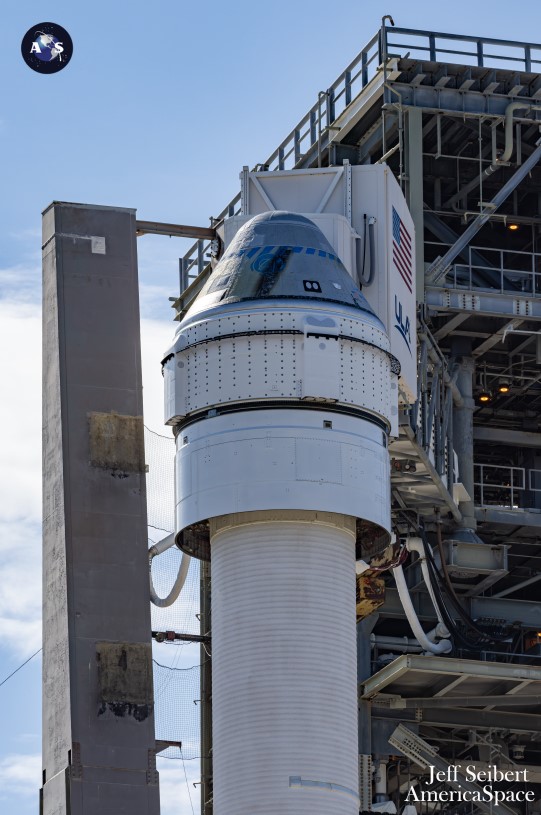

The result was a sharp reduction in the ratio between the Atlas’ structure and weight: its “empty” weight was less than two percent that of its propellant weight and yet the airframe as a whole remained capable of withstanding extreme aerodynamic loads. Meanwhile, a three-engine design for the missile—with two boosters and one “sustainer”, together with small verniers—was developed by the Rocketdyne Division of North American Aviation.
In its Project Mercury incarnation, the Atlas-D, the rocket’s airframe benefitted from a thicker, sturdier skin and employed radio-inertial guidance systems to detect aerodynamic forces and calculate and adjust its positioning, speed and direction. And in December 1958, the Space Task Group (STG) at NASA’s Langley Research Center (LaRC) in Hampton, Va., formally selected Atlas as its launch vehicle of choice for Project Mercury’s manned orbital missions and ordered nine flight units.
Its maiden suborbital flight with an uncrewed Mercury capsule attached—known as Mercury-Atlas (MA)-1—took flight from Cape Canaveral’s Launch Complex 14 at 9:13 a.m. EST on 29 July 1960. The early part of ascent proceeded without incident, but a minute after liftoff the pressure differential between the rocket’s liquid oxygen and fuel tanks suddenly ran to zero and contact was lost.
Cloud cover over the Cape that morning was so thick that visual and photographic evidence was almost impossible, but telemetry data indicated that the Atlas’ walls had ruptured due to vibrations set up by mechanical resonance in the adapter linking the rocket and the Mercury capsule. The stack reached an altitude of 8.1 miles (13 kilometers) before descending to impact the Atlantic Ocean; astonishingly, the Mercury capsule maintained its structural integrity and was recovered (though crumpled) from the water.


A stainless-steel reinforcing “belly-band” was implemented and the adapter stiffened as part of corrective steps and MA-2 got underway at 9:12 a.m. EST on 21 February 1961. It ascended to 114 miles (183 kilometers), after which the uncrewed Mercury capsule separated and performed a ballistic re-entry and splashdown in the Atlantic Ocean.
Nine weeks later, at 11:15 a.m. EST on 25 April 1961, MA-3 rose from Earth carrying an electronic mannequin capable of “inhaling” and “exhaling” man-like quantities of gas, heat and water vapor. But the Atlas suffered a transient voltage issue during ascent, which caused it to fail to properly execute its pitch and roll program maneuvers.
“The roll and pitch program normally changed the initial vertical trajectory of the launch into a more horizontal one that would take the Atlas out over the Atlantic,” wrote legendary NASA flight director Gene Kranz in his memoir, Failure Is Not An Option. “The Atlas was still inexplicably flying straight up, threatening the Cape and the surrounding communities.” The booster was remotely destroyed by the range safety officer at 43 seconds after liftoff, but astonishingly the MA-3 capsule survived and splashed into the Atlantic Ocean in such good condition that it was reused for the next mission, MA-4.
In readiness for MA-4, the flight-proven capsule was meticulously cleaned, repaired and its heat shield was replaced. At 9:04 a.m. EST on 13 September, the Atlas delivered MA-4 to orbit and succeeded where its predecessor had so dismally failed.
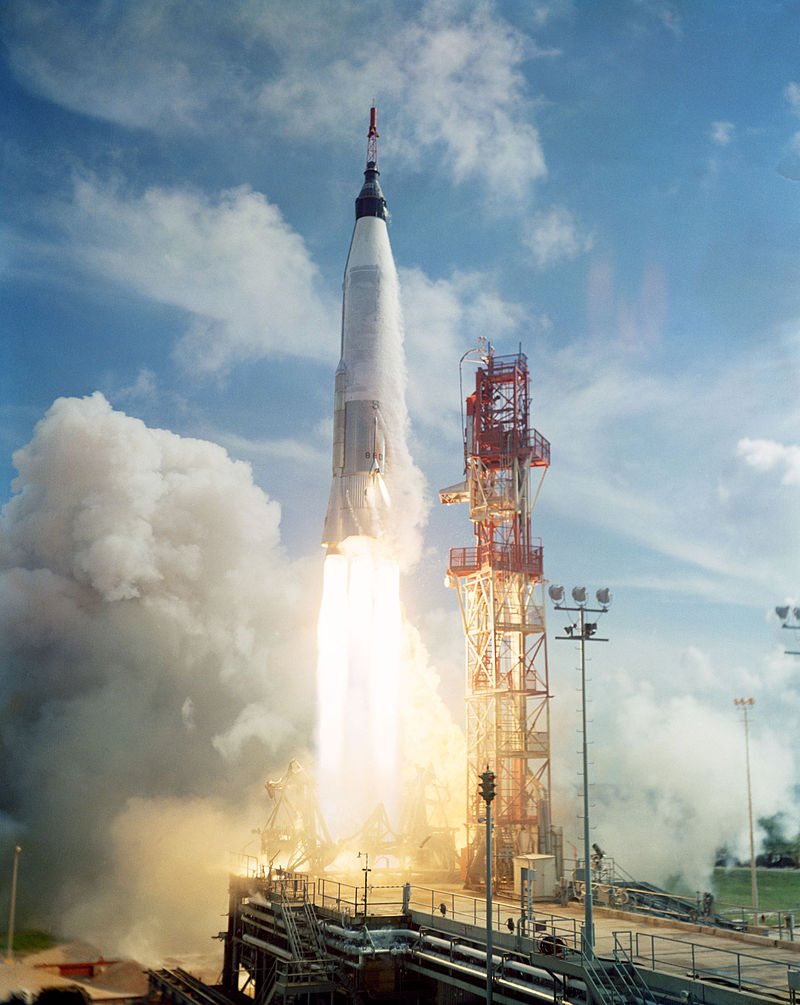

And on 29 November, the chimpanzee Enos was blasted into orbit aboard MA-5 to evaluate the Mercury capsule’s life-support systems and the Atlas’ own performance with a living passenger aboard. Enos, who owed his name to the Hebrew word for “man”, had undergone 1,250 hours of training, including psychomotor preparations and parabolic aircraft flights, to ready him for his mission. Speaking shortly after liftoff, President John F. Kennedy drew laughs from the Senate when he announced that the just-launched Enos “reports that everything is perfect and working well”.
The Atlas successfully placed MA-5 and Enos into a precise orbit with an apogee of 147 miles (237 kilometers) and a perigee of 98.8 miles (159 kilometers). Originally intended to complete three orbits of Earth—the same as was planned for astronaut John Glenn on MA-6, the Atlas’ first manned mission—MA-5 experienced problems with its attitude-control system and forced flight controllers to terminate the flight after two orbits.


Enos’ flight was far from wrinkle-free, however, and the beleaguered chimp weathered failures with his ship’s environmental control system and the temperature of his pressure suit climbed to an uncomfortable 38.1 degrees Celsius (100.6 degrees Fahnreheit). On-board equipment failures also meant that poor Enos was “rewarded” for operating the correct controls not with banana pellets, but with electric shocks…
Blooded and described as “excitable” when he was rescued, the flight of Enos soon faded as NASA prepared to launch Glenn as early as 19 December on the first manned Atlas mission. Unfortunately, a series of technical issues pertaining to the MA-6 capsule pushed the launch into January 1962 at the earliest.
But the problems remained and few were under any illusions that Glenn’s flight would be problem-free. “John Glenn is going to ride on that contraption?” famed rocket engineer Wernher von Braun remarked. “He should be getting a medal just for sitting on top of it before he takes off!”
The second part of this three-piece story will appear tomorrow.
FOLLOW AmericaSpace on Facebook and X!


